Semafo (TSX: SMF; US-OTC: SEMFF) kicked off the year by delivering an inferred resource of 2.1 million tonnes grading 5.35 grams gold per tonne for 361,000 contained oz. gold for its Bantou Zone project, 170 km south of its producing Mana mine in Burkina Faso, the West African nation’s third-largest gold mine.
News of the maiden resource estimate was followed by Semafo’s acquisition in May of Savary Gold and the junior’s Karankasso gold project, which is contiguous to Bantou and hosts 12.3 million inferred tonnes grading 2.03 grams gold for 805,000 ounces.
Semafo is consolidating the two resources into a base case mining scenario, and says mineralized material from its larger land package could be trucked 25 km to a central plant, likely in the northwest of the property.
“Savary represents a low-cost, accretive addition to our development pipeline, and, when combined with our Bantou property, results in a property package that is approximately 25 km east to west and approximately 50 km north to south — that’s 1,250 sq. km in the Houndé belt,” president and CEO Benoit Desormeaux said in a conference call on May 7.
“The Houndé belt is a prolific gold belt that hosts Mana, where we have mined over 2 million oz. gold over the past 10 years. We see this combined property package as a district-scale mining area that is going to be part of our future for many years to come.”
One month after the Savary acquisition closed, Semafo announced a gold discovery 1.5 km north of the Bantou Zone that it calls Bantou North, and has increased its exploration program there from US$3 million with one drill rig to US$11 million, with three.
One rig will focus on Bantou North, the other on the Banzou Zone, and a third will test targets on the Bantou property. In addition, an 8,000-metre air-core program will provide first-pass exploration on regional targets across the 1,250 sq. km property.
Bantou North is characterized by wide, consistent disseminated gold mineralization over 250 by 300 metres, and while the geometry is unclear, the zone remains open to the east and at depth.
The best intercept, in drill hole 19-277, returned 128 metres grading 2.54 grams gold per tonne starting from 3 metres’ depth, including 3.68 grams over 67 metres and 6.50 grams over 26 metres. Other highlights were 19-278, which cut 1.18 grams over 96 metres starting from 6 metres downhole, and 19-283, which assayed 2.45 grams over 136 metres from 105 metres downhole, including 4.82 grams over 40 metres. Another drill hole, 19-254, returned 1.35 grams gold over 133 metres from 9 vertical metres, including 2.90 grams over 33 metres.
The mineralization at Bantou North consists of 1% to 5% fine disseminated pyrite, within alternating intermediate intrusive and volcaniclastic rocks. Although the enriched zones seem spatially associated with the intrusives, the zone is found in both rock types.
Test results from preliminary metallurgy on three samples suggest that Bantou North would be amenable to standard milling, with recoveries greater than 90% in the oxide and greater than 85% in the sulphide.
In the first quarter ending March 31, the company completed 58 reverse-circulation (RC) drill holes (9,188 metres) and five core holes (821 metres) at Bantou.
The first quarter was successful on a number of fronts. Semafo’s Boungou and Mana mines produced a combined record of 102,400 oz. gold and generated US$79 million, or 24¢ per share, in cash flow from operating activities, the highest in the company’s history. Net income attributable to shareholders reached US$17.7 million, or 5¢ per share. This included a US$15-million, non-cash deferred tax charge, which, if excluded, would have sent net income to US$32.7 million, or 10¢ per share.
Boungou started commercial production in September 2018, while Mana, 260 km southwest of Ouagadougou, poured its first gold in 2008. Last year the two mines produced a total of 244,600 oz. gold at all-in sustaining costs (AISCs) of US$951 per ounce. Mana’s production last year came from its Siou and Wona satellite deposits.
Siou, a high-grade deposit 20 km from the Mana mine, started production as an open pit in early 2014. Siou was a blind discovery that Semafo brought into production in just 18 months. Development of Siou underground got underway in the third quarter of 2018. The National Mines Commission approved Siou underground in April, and the permit is expected shortly, the company says.
Semafo’s 2019 guidance is to produce between 170,000 and 190,000 oz. gold at AISCs of US$950 to $1,020 per oz. at Mana, and between 220,000 and 240,000 oz. gold at AISCs of US$470 to $510 per oz. at Boungou.

Workers with a reverse-circulation drill at Semafo’s Natougou gold project, 320 km east of Ouagadougou, Burkina Faso. Credit: Semafo.
In the meantime, the company continues to explore both Boungou and Mana. During the first quarter, Semafo launched an RC drill program at Mana on satellite targets just north of the Siou deposit, with early results including 3 metres of 3.31 grams gold and 5 metres of 2.16 grams gold. Semafo also RC drilled 7,517 metres at Boungou’s Dangou Northeast and Dangou Centre targets. Early results include 1 metre grading 22.9 grams gold per tonne; 9 metres of 1.36 grams gold; 4 metres of 3.67 grams gold; 1 metre of 6.66 grams gold; and 3 metres of 5.69 grams gold.
Elsewhere in Burkina Faso, Semafo started a preliminary economic assessment (PEA) of its Nabanga deposit, 125 km southwest of Boungou, and 250 km southeast of Ouagadougou. It expects to finish the PEA in the third quarter of this year.
In February, the company reported a 42% increase in Nabanga’s inferred resource to 3.4 million tonnes grading 7.7 grams gold for 840,000 contained oz. gold. The updated estimate was based on 395 drill holes (both RC and diamond drill) totalling 57,488 metres, including 67 core holes drilled since Snowden completed the last estimate in August 2012.
Nabanga is a typical intrusion-related-type deposit, mostly hosted within a magnetite-rich granodiorite intrusive. Gold mineralization is associated with quartz veining and a distinctive alteration zone developed around the structure, the company says.
The deposit remains open to the northeast, and the company reports that recent auger drilling around the deposit has found gold geochemical anomalies that could offer proximal satellite zones of gold mineralization.
Recently, a revised interpretation of the mineralization at Nabanga suggests that high-grade zones of the deposit have a shallower plunge than previously thought, the company says.
Exploration at Nabanga this year will test the northern extension, explore the down-plunge extensions confirmed by recent drilling, and drill test the auger geochemical anomalies near the deposit. It will finish the PEA while trying to expand the resource.
Semafo’s property portfolio in Burkina Faso now stands at more than 4,500 sq. km, one of the most extensive land positions in the country.
At press time, Semafo’s shares are trading at $4.65 in a 52-week range of $2.24 to $4.79. The company has a $1.6-billion market capitalization.
Kerry Smith of Haywood Securities has a “buy” rating on the stock and a price target of $6 per share. “Semafo continues to be one of our top picks for 2019, with production growing, costs decreasing and cash flow per share increasing by over 100% in 2019. The shares are still trading at only 3.4 times EV/2019 cash flow per share, versus peers at 5.7 times. A dividend or share buyback is also likely, given the strong cash flows and excellent balance sheet.”

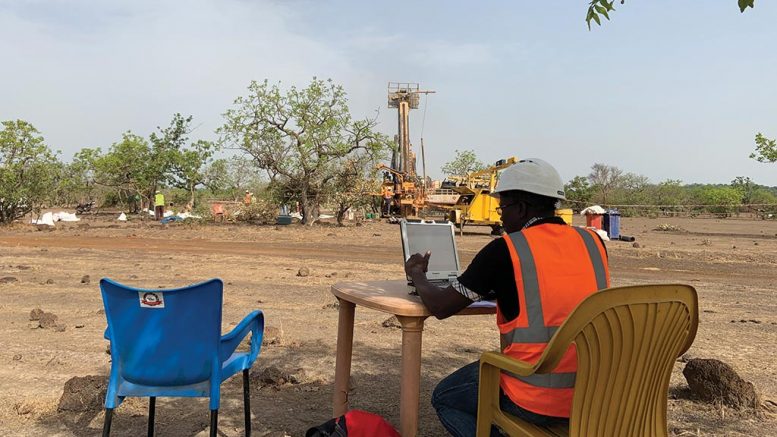
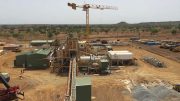
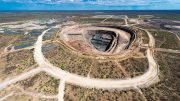
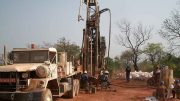
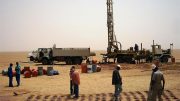
Be the first to comment on "Semafo delivers maiden resource for Bantou"